Have you ever been on a Colombian coffee farm tour?
I’ve been battling an obsession with coffee for a long time. Despite adoring the taste, the caffeine buzz, and the resulting burst of productivity, coffee also makes my skin break out, gives me the shakes occasionally, and sometimes causes a buzz that’s a bit too much for me to handle.
So after a few too many South American coffees, I thought I’d try abstaining for a while. And I was managing to hold off pretty well!… Until I moved to Colombia.
Within days of living in Medellin, I was firmly ensconced in a newspaper office where the smell of freshly brewed coffee followed me through the corridors. The editor’s incessant need for caffeine – not to mention the echoed need from my fellow journalists – was very hard not to emulate. I lasted about a month before I finally caved, and started drinking the stuff again.
A dependence on Colombian coffee
Sadly enough, I don’t regret the decision – I bloody love coffee. And I know I can stop drinking it again when I want to, but why would I avoid the stuff when I’m living in a country that’s famed for its coffee?
To a tourist’s eyes, the coffee culture in Colombia is integral to daily life.
Read more: My travel guide to backpacking Colombia
In every city, there are men with giant silver metal canteens on their backs and a stack of plastic cups at their side; they make the rounds to various shop owners, pouring out generous doses of cafe tinto. They always add sugar but never milk; Colombians drink their coffee black.
Then there are the more static sellers; usually older men who sit patiently on the street, fronted by an array of colourful thermos flasks, waiting for caffeine-obsessed customers to come to them.
Colombians also drink their tinto standing up. I know this because on the few occasions I’ve walked down the street while attempting not to spill hot coffee on myself, I’ve been laughed at. Stupid gringa! Doesn’t she know that coffee is to be savoured?
The strange thing, though, is that Colombians don’t actually drink that much of their own incredibly tasty, locally-grown coffee. Most of it is destined for export around the world, meaning that the coffee you drink all around Colombia is more likely to be powdered Nescafe than the real deal.
Unless you head to the heart of the coffee industry: the ‘eje cafetero‘ region of Colombia, known for growing and producing the majority of Colombian coffee, and widely regarded as some of the best in the world.
Discovering the coffee farms of Salento Colombia
After three months in a big city, peppered only occasionally by weekend trips to nearby pueblos and just over a week sunning myself on Caribbean beaches, I was really desperate for some greenery. Thankfully, the coffee region of Colombia is absolutely brimming with the stuff; rolling hills and huge banks of trees, only occasionally broken up by small houses or clusters of cows.
And every now and again, you happen upon a coffee farm.
Salento coffee is some of the best you’ll drink in Colombia – and there are plenty of Salento coffee tours where you can learn about the process of growing, harvesting and preparing Colombian coffee beans.
The only question is deciding which Colombian coffee tour to choose.
Each of the hostels in Salento recommend their favourite coffee farms for different reasons. I was staying at La Serrana (an amazing farmhouse-turned-hostel which feels more like someone’s country manor than a place for backpackers) and when I asked about the best coffee tour in Salento, every guest spoke fondly about Don Elias and his coffee farm, a 45 minute walk from the hostel.
So I gathered up a crew of other hostel guests, and we set out for the Don Elias Coffee Tour!
Unlike a number of other places in the area, ‘Finca Don Elias’ is family-run – a factor which is obvious from the outset. When we walked into the front yard, we were greeted by a number of different women sitting on broken sofas on the porch, a teenage boy, and a small child screaming, “Que? Que? Que?” at everyone. The teenager, Carlos, turned out to be Don Elias’s grandson, and chatted to us on the broken sofas while we awaited the arrival of the Don himself.
I’d gleaned from other travellers that it was Don Elias himself who showed visitors around his plantation – but after ‘the Don’ had eventually arrived in a car, we simply shook the famous man’s hand and set off into the plantation with Carlos instead.
Clearly the Don had other important matters to attend to.
Touring the Don Elias coffee farm in Salento
Our Salento coffee tour around the plantation was brief; walking along narrow grassy pathways between the endless bushes. Carlos would pause at intervals to point out the coffee plants flowering; the two different strains of coffee, Arabica and Colombiana; the fact that, though they both produce the same flavour and intensity, their colour is different; and, moreover, that the Arabica plant itself is stronger, and supports the Colombiana’s growth.
He explained that the Elias family also cultivate a range of different fruits because they contribute to the overall welfare of the coffee plants; banana trees help shade the coffee, yuca helps the roots to grow, dropped avocados from the trees above help with composting the land, and the sweet smell of pineapple plants and orange trees attract the bugs away from the coffee bushes.
Carlos led us through the rest of the very humble operation – to the shelling machine which all the beans are put through, falling straight into a tank where they ferment for no more than 24 hours.
Afterwards, they’re collected into piles and set out to dry – either on a roof in the sun, or under a tent of heavy duty plastic sheeting when the weather’s bad. It takes anywhere from a few days to a month for the drying process to be complete.
Next, the dried beans are roasted in a pan on the fire – “no agua, no aceite, nada,” the teen told us. And finally, after roasting without water or oil, they’re ground up through a machine which looked so fascinating that I immediately decided I wanted to own it.
Finally we were led to a small wooden table, back on the front porch, while Carlos prepared the grand finale; actually sampling the coffee. And luckily, when he returned, he’d brought the infamous Don Elias with him.
Don Elias and his clear passion for Colombian coffee
Don Elias has been running his coffee farm for twenty years, ever since he moved to Salento from Cali. Two family members plus six hired workers harvest the coffee beans twice a year, for three months each harvest.
The beans are all picked by hand and are 100% organic. The farm produces anywhere from 3 to 3,000 kilos of coffee each year, depending on the weather: not a huge amount, but enough to support the family.
The Don is a perfect representation of Colombia’s coffee culture, dressing the part in an ironed shirt and white cowboy hat. His eyes were constantly crinkled as he spoke in soft Spanish, smiling at each of us in turn.
When we asked about the humble coffee bean’s very beginning, he hurried outside and reappeared holding a stalk: “the tree” in miniature, he said.
Of course, the Elias family also make a regular income from the influx of foreign tourists eager to see the inner workings of a Colombian coffee farm. It’s a rapidly expanding business model, particularly in the coffee region, and the smaller and more ‘authentic’ a place seems, the more likely it is to receive a barrage of visiting backpackers.
Particularly when the coffee is fresh, organic and cheap, and the man in charge takes selfie photos on request.

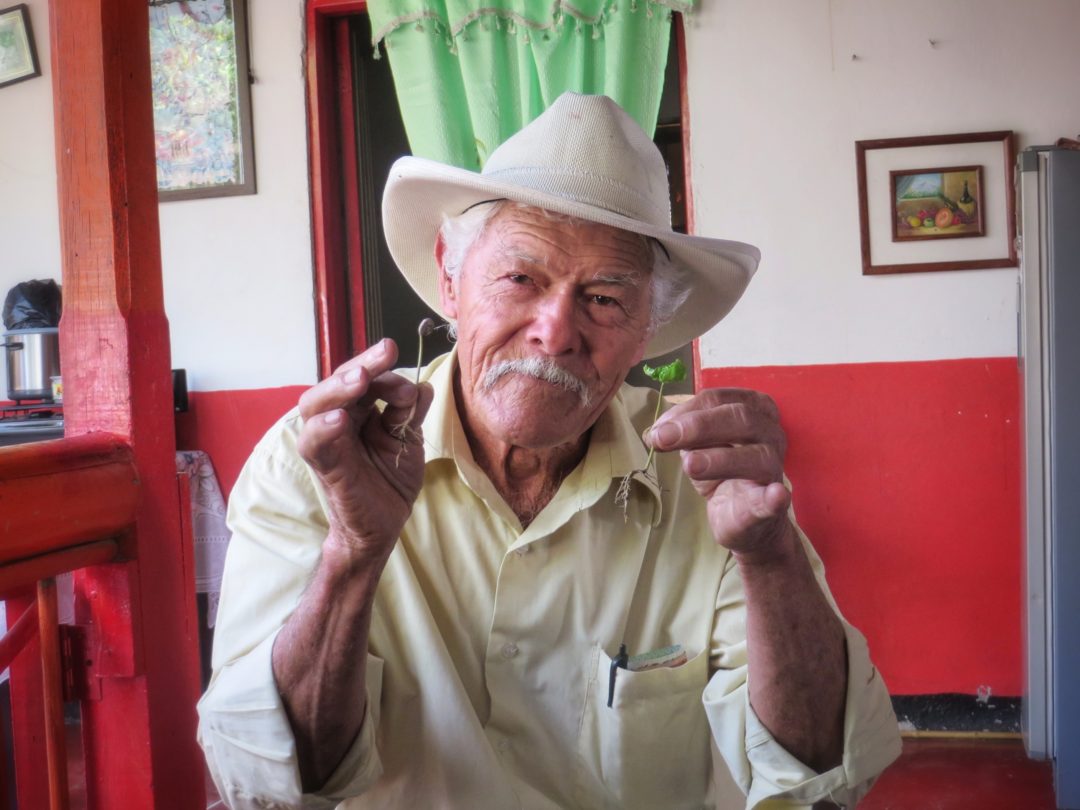

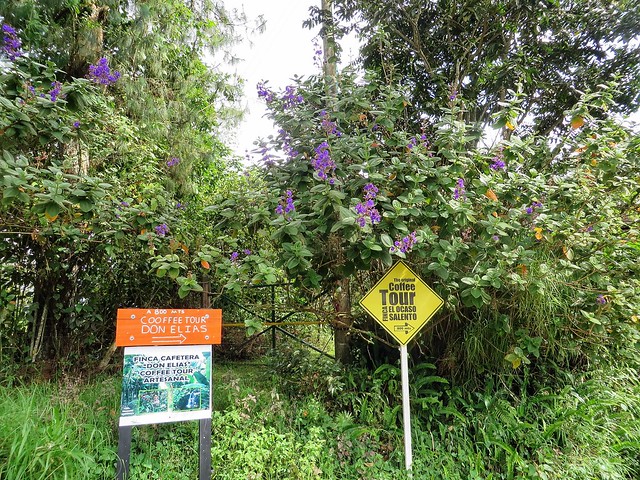
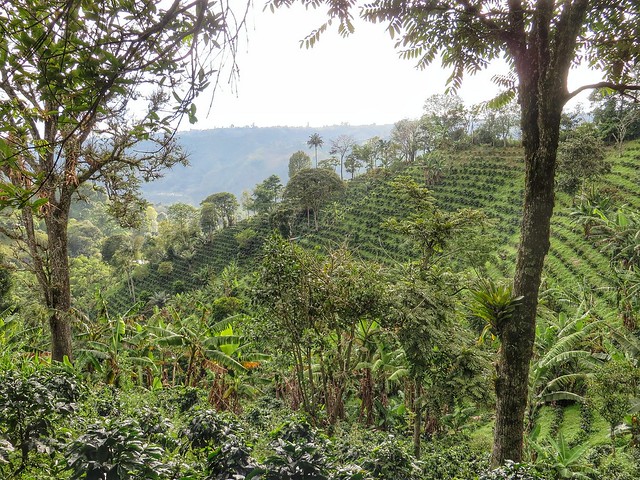

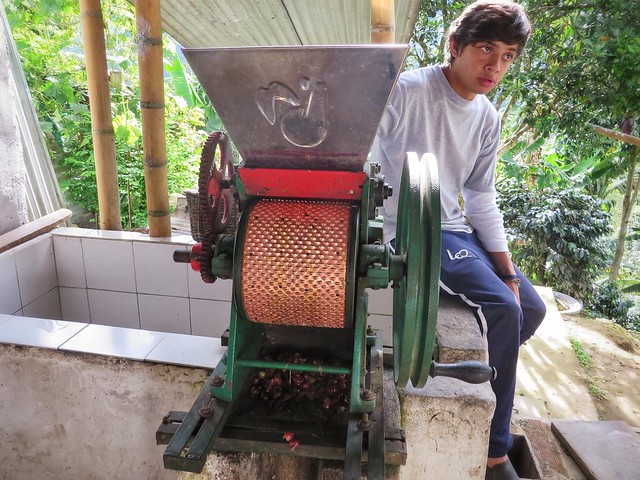
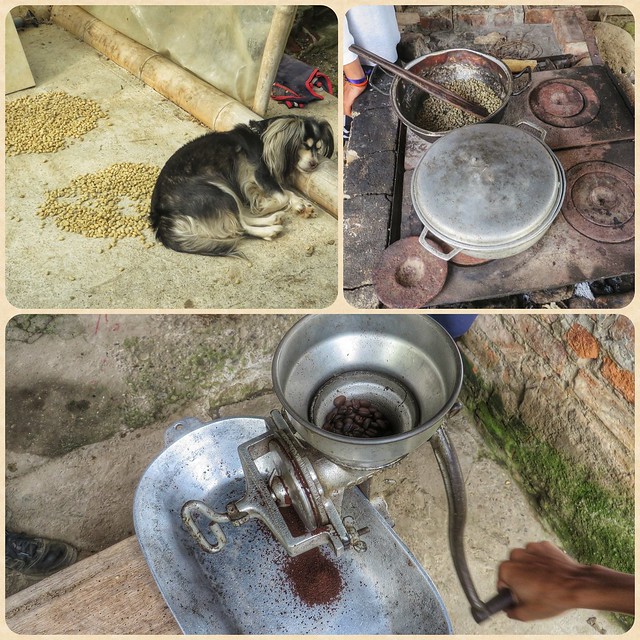
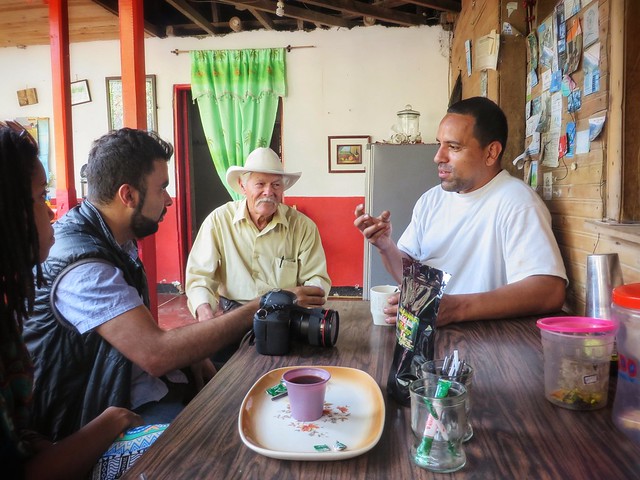

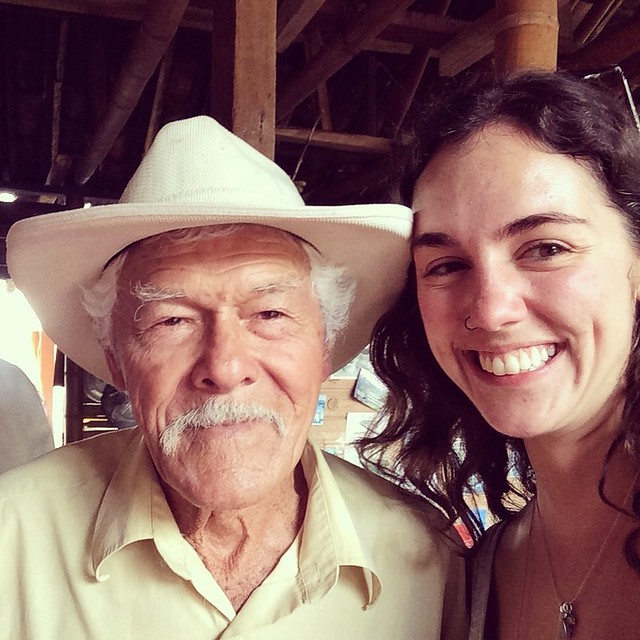

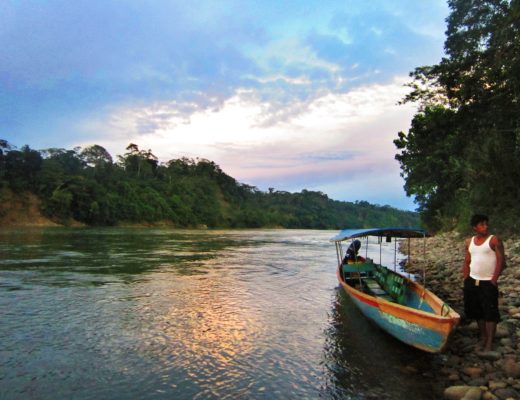
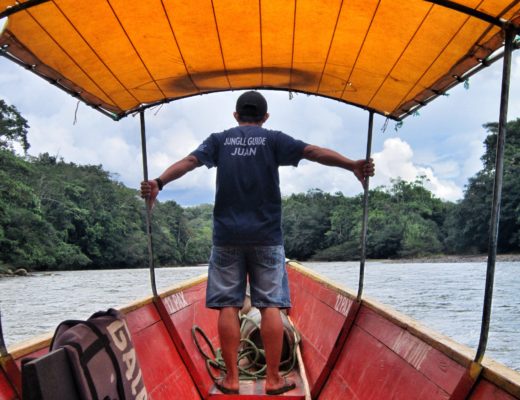

11 Comments
Claire
July 3, 2014 at 10:50 amYour posts are making me excited to get to Colombia! I’ve heard great things about Salento.
Flora
July 11, 2014 at 1:40 amWoo! I love it when people go to the same places I do 🙂 If you want any tips for Colombia let me know – I’m a tad obsessed with the country 🙂 And definitely stay at La Serrana in Salento, you’ll never want to leave (although book ahead as they get full quickly!)
Cucuman
December 11, 2014 at 5:42 pmThrough Speak Espanol we invite to you have another experiencie in Caribbean side of Colombia South America. As colombians we are happy with your greate experiences in Colombian coffe areas. Wishing the best. Cucuman International
Flora
January 6, 2015 at 1:48 pmMuchas gracias amigos!
Kate
July 3, 2014 at 11:20 amWhat a fantastic post!! I would love to visit more coffee regions – parts of the Philippines, Uganda, and Kenya have been my only experiences so far, and they’re perhaps not quite as well-known for coffee as Colombia. Thanks for sharing your gorgeous photos 🙂
Flora
July 11, 2014 at 1:40 amAha but they’re still some pretty epic places to learn about coffee!
Hannah
July 4, 2014 at 7:00 amGreat post! I, like you, adore coffee. I’m trying not to drink it at the moment (which is a bit easier in London than Colombia, I’m guessing). I love the coffee farm, I wanted to visit one on my recent trip through Central America but I didn’t get the chance too.
Flora
July 11, 2014 at 1:44 amAlas I’m equally worried about cutting down on coffee in London – it’s such a treat to get a cappuccino when I’m out! Although I have a feeling the shocking price differences are going to affect my buying abilities in good old London Town…
The Spanish Challenge: Walking the Camino with Spaniards
December 28, 2015 at 12:35 pm[…] my head was filled with burgeoning sentences that couldn’t quite get themselves going. A caffeine lover already, I began to associate the morning’s first coffee with renewing my Spanish […]
Our first time in Colombia – Backpacking with a fork
September 7, 2019 at 8:47 pm[…] PLACE TO GO: Finca Don Elias – Organic and traditional coffee […]
Our first time in Colombia – Backpacking with a fork
November 18, 2019 at 9:59 pm[…] PLACE TO GO: Finca Don Elias – Organic and traditional coffee […]